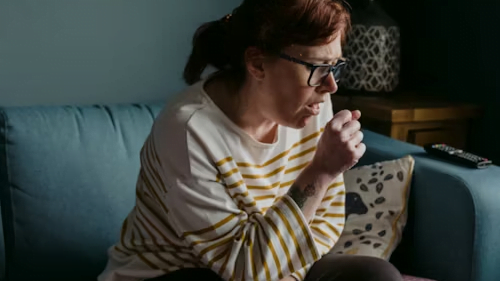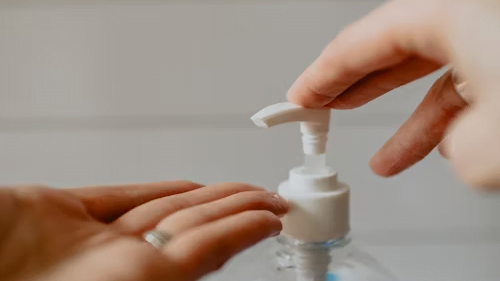Is Walking Pneumonia Contagious? Spread and Prevention

A question that often arises is, “Is walking pneumonia contagious?” Walking pneumonia is a less severe form of pneumonia, often misunderstood due to its mild symptoms and deceptive name. This article will explore the contagious nature of walking pneumonia, how it spreads, and how you can protect yourself and others.
What is Walking Pneumonia?

Walking pneumonia is in most cases caused by the bacterium Mycoplasma pneumoniae. Unlike conventional pneumonia, taking walks pneumonia is much less extreme, and individuals with it regularly stay energetic, for this reason the time period “on foot” or “walking”. The symptoms are typically mild and may be improper for a commonplace bloodless or the flu, making it challenging to diagnose without right scientific interest.
Is Walking Pneumonia Contagious?
Yes, walking pneumonia is contagious. It spreads via respiration droplets whilst an inflamed character coughs or sneezes. These droplets can be inhaled by using others, main to the spread of the infection. Unlike the greater severe forms of pneumonia, on foot pneumonia can spread quite without difficulty, mainly in crowded environments like schools, workplaces, or public transportation.
How Does Walking Pneumonia Spread?
The primary mode of transmission for walking pneumonia is through close contact with an infected individual. The bacteria Mycoplasma pneumoniae is resilient and can survive in the respiratory tract of the infected person for weeks. During this period, the infected person can unknowingly spread the bacteria to others.
- Airborne Transmission: When someone with strolling pneumonia coughs or sneezes, tiny droplets containing the bacteria are released into the air. These droplets may be inhaled with the aid of human beings nearby, main to infection.
- Direct Contact: Walking pneumonia can also spread through direct contact, such as sharing utensils, kissing, or touching surfaces contaminated with the bacteria and then touching the face, especially the nose or mouth.
Who is at Risk?

Walking pneumonia can affect anyone, but certain groups are more vulnerable, including:
- Children and Adolescents: Schools and daycare centers are common places for the spread of walking pneumonia due to close contact among children.
- Elderly Individuals: Older adults with weakened immune structures are at better threat of contracting the contamination.
- People with Chronic Illnesses: Individuals with situations like bronchial asthma, diabetes, or coronary heart sickness can be extra prone to severe signs.
Symptoms of Walking Pneumonia

Recognizing the symptoms of on foot pneumonia is vital for early treatment and preventing its unfold. Common signs consist of:
- Persistent dry cough
- Sore throat
- Mild fever
- Fatigue
- Chest pain when breathing or coughing
- Headache
These symptoms are regularly mild and may expand steadily, that’s why taking walks pneumonia can be effortlessly not noted
Diagnosis and Treatment
If you suspect you have walking pneumonia, it’s essential to seek medical advice.A physician can diagnose walking pneumonia through a bodily exam, listening to the lungs, and probable ordering a chest X-ray. In some cases, a blood check can be required to affirm the presence of Mycoplasma pneumoniae.
Treatment generally entails antibiotics, as the contamination is bacterial. Over-the-counter medicinal drugs will also be endorsed to alleviate signs which include cough, fever, and pain.
Preventing the Spread of Walking Pneumonia

Preventing the spread of on foot pneumonia calls for both personal precautions and community attention:
- Good Hygiene Practices: Regular hand washing, the usage of hand sanitizers, and covering the mouth and nose when coughing or sneezing can appreciably lessen the spread of bacteria.
- Avoiding Close Contact: If you or someone in your family is infected, it’s essential to avoid near touch, mainly with susceptible individuals together with the elderly or people with weakened immune structures.
- Disinfection: Regularly disinfecting commonplace surfaces like doorknobs, counter tops, and shared electronics can prevent the unfold of the bacteria.
- Stay Home When Sick: To protect others, it is advisable to live home and avoid public locations if you suspect you have got on foot pneumonia.
How Long is Walking Pneumonia Contagious?
Walking pneumonia can be contagious for several weeks, even after symptoms have subsided. The bacteria can remain inside the respiratory tract, allowing the inflamed individual to spread the ailment unknowingly. Therefore, it’s critical to maintain training precise hygiene and comply with the prescribed remedy plan to minimize the threat of spreading the contamination to others.
When to Seek Medical Attention
While walking pneumonia is generally mild, certain symptoms should prompt immediate medical attention:
- High fever that does not subside
- Difficulty breathing or shortness of breath
- Severe chest pain
- Worsening symptoms despite treatment
These signs may additionally indicate a greater excessive infection or complications requiring pressing hospital therapy
Conclusion: Protecting Yourself and Others
So, is walking pneumonia contagious? Absolutely. Understanding the way it spreads and taking the vital precautions can help guard your self and those around you. Practicing specific hygiene, being privy to signs and symptoms, and trying to find properly timed clinical advice are key to stopping the unfold of walking pneumonia. By staying knowledgeable and proactive, you could decrease the effect of this not unusual but frequently omitted infection.
READ MORE:
Is Pneumonia Contagious? Risks and Precautions
HIV/AIDS: Causes, Symptoms, and How to Stay Protected
Virus: Types, Symptoms, and Protection
Pneumococcal Vaccine for Adults, Worth It?
